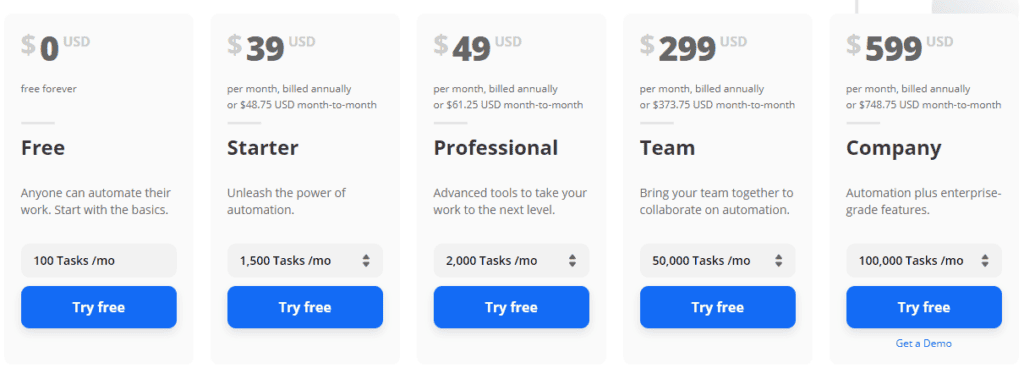Both free trials and freemium models aim to provide prospects with a glimpse of the experience before committing. However, there’s a growingly popular approach known as UBP (also called volume-tiered pricing). In this approach, customers upgrade not to unlock new features but to get more of what they already find valuable. With UBP, there’s no need to test additional features. Users of the base version of your offering already see value in it and are willing to upgrade to access more of what they’re already using. For example, you might offer all features for free initially, then charge $10/month for 10GB of storage, or $18/month for 20GB, and so on.
The crucial element in creating an effective UBP (Usage-Based Pricing) model is to tier it based on the appropriate usage metric. This metric should reflect the value users derive from your solution, their growth potential, and their ability and willingness to invest more in your offering. If you choose the right metric, you can encourage users to convert from free to paid even on the same day. However, placing the paywall behind the wrong metric can backfire and discourage users from using your solution.
Mailchimp is one of the most recognizable pioneers in exploring UBP. In September 2009, they made an outrageous decision to move from freemium to Forever Free. Under this new policy, any user, whether new or existing, with fewer than 500 subscribers, gained free access to all of Mailchimp’s features. Here’s what their announcement looked like:

What do you think happened next? Small businesses leaped at this opportunity. In a year, their user base surged from 85,000 to 450,000 (+500%). They were consistently adding more than 30,000 new free users and acquiring 4,000 new paying customers each month. Most importantly, their profit (not only revenue) skyrocketed by an astounding 650%.
Under their new Forever Free approach, pricing would adjust as a user’s subscriber list expanded (this allowed them to share in their customer’s success). For instance, it would be $50 for 1,501-2,500 subscribers, $90 for 2,501-5,000 subscribers, and so on. This pricing strategy also contributed to decreased churn because users were less inclined to explore other platforms once they had imported or grown their subscriber base and became reliant on Mailchimp’s interface and integrations.
HubSpot adopts a similar approach, they offer their CRM tool for free. Once you’ve imported your contacts and started relying on their CRM, it makes it all the more difficult to migrate to an alternative CRM. They blend freemium with UBP by monetizing through sales and marketing add-ons which are priced according to the number of contacts you have in your CRM. They can charge their clients more as their clients grow and make more profit.
YAMM (Yet Another Mail Merge) is yet another example. It’s a Google Sheets plugin that enables you to send personalized emails in bulk via your Gmail account. If you install the plugin, it allows you to send up to 50 free emails a day, requiring an upgrade to send more. I’ve personally used this tool and found myself upgrading almost instantly after sending a few emails to test it. Upon realizing it provides excellent email tracking reports and better deliverability rates compared to other similar mail merge tools, I readily upgraded to continue sending more emails for my outreach campaign.

